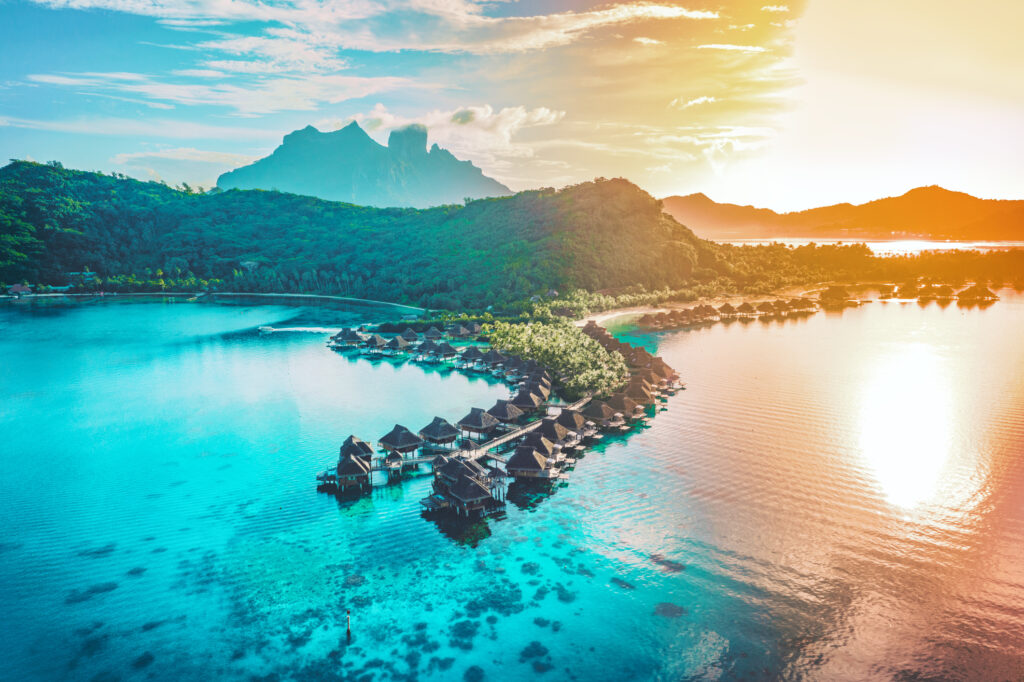Tonga/New York, August 27 – Inhabitants and their livelihoods in idyllic Pacific islands are threatened by an unprecedented rise in sea levels and ocean warming and acidification, the World Meteorological Organization said in a report on the state of climate in the South-West Pacific.
The dangers of rising sea levels in the Pacific as well as in the Caribbean and coastal cities in some countries around the world have prompted the UN to issue a global SOS – Save our Seas – and warnings that the catastrophe has the “unparallelled power“ to cause havoc to coastal cities and ravage coastal economies.
The WMO report said the Pacific islands, despite accounting for just 0.02 per cent of global emissions, are “uniquely exposed” to destruction caused by coastal floodings because the islands have an average elevation of just 1 to 2 meters above sea level, and 90 percent of the population live within 5 kilometers of the coast and half of the infrastructure is within 500 meters of the sea.
The State of the Climate in the South-West Pacific 2023 Report, which was issued together with the WMO report said sea level in Western Pacific has risen approximately 10–15 cm (4–6 in), close to or nearly twice the global rate measured since 1993 and in the central Pacific, sea level has risen approximately 5–10 cm (2–4 in).
The reports, which said that the average rate of sea level rise has more than doubled since the 1990s, were issued at the 53rd Pacific Island Forum Leaders Meeting hosted by the Kingdom of Tonga. UN Secretary-General Antonio Guterres joined the forum’s 18 member states and he told them that the Pacific is a “beacon of solidarity and strength, environmental stewardship and peace.”
“I am in Tonga to issue a global SOS – Save Our Seas – on rising sea levels,” Guterres told a press conference. “A worldwide catastrophe is putting this Pacific paradise in peril. And around the world, rising seas have unparallelled power to cause havoc to coastal cities and ravage coastal economies. The reason is clear: greenhouse gases – overwhelmingly generated by burning fossil fuels – are cooking our planet.”
Guterres said unless emissions are drastically cut, the Pacific Islands can expect at least 15 centimeters of additional sea level rise by mid-century, and more than 30 days per year of coastal flooding in some places. He also renewed calls for world leaders to drastically slash global emissions, phase-out of fossil fuels, boost climate adaptation investments to protect people from catastrophic climate and limit global warming to 1.5 degrees Celsius, which requires a drastic cut in global emissions.
The Pacific Islands Climate Change Monitor said “notable increases” in sea level include Guam from 2 to 22 times a year; Penrhyn, Cook Islands from 5 to 43 times a year; Majuro, Republic of the Marshall Islands from 2 to 20 times a year; Papeete, French Polynesia from 5 to 34 times a year; and Pago Pago, American Samoa from 0 to 102 times a year.
One billion people live in coastal areas threatened by rising sea levels – The UN chief said 1 billion people are living in coastal areas across the world, from low-lying islands to megacities and from tropical agricultural deltas to Arctic communities are endangered by floodings. Those people live in coastal megacities in Dhaka, Los Angeles, Mumbai, Lagos and Shanghai.
“Rising seas will increase the frequency of extreme events like coastal floods. If global temperatures rise by 2.5 degrees, that frequency could increase from once in 100 years to once in five years by the end of this century,” Guterres said. “Without new adaptation and protection measures, economic damage from coastal flooding could amount to trillions of dollars. Around 1 meter of future sea level rise is already locked in. But its future scale, pace, and impact are not. That depends on decisions we take now.”
WMO Secretary-General Celeste Saulo said, “Communities, economies and ecosystems throughout the South-West Pacific region are significantly affected by its cascading impacts. It is increasingly evident that we are fast running out of time to turn the tide.”
“The ocean has taken up more than 90 percent of the excess heat trapped by greenhouse gases and is undergoing changes which will be irreversible for centuries to come. Human activities have weakened the capacity of the ocean to sustain and protect us and – through sea level rise – are transforming a lifelong friend into a growing threat,” she said. “Already we are seeing more coastal flooding, shoreline retreat, saltwater contamination of freshwater supplies and displacement of communities.” (By J. Tuyet Nguyen)
United Nations journalists – United Nations journalists – United Nations journalists
United Nations News – United Nations News – UN Correspondents Association – UNCA Awards

